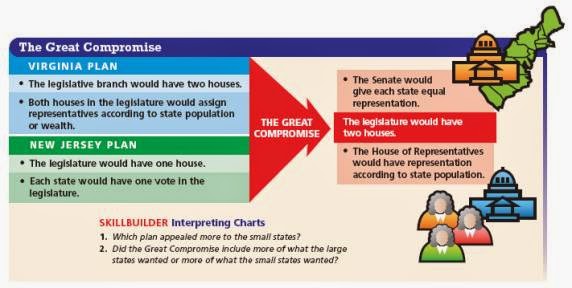 |
| The Great Compromise |
United States Constitution. The delegates were trying to find a way each state could be represented in Congress. There were two plans, the Virginia Plan and the New Jersey Plan. In the New Jersey plan, the smaller populated states wanted the same number of representatives as the more populated states to represent Congress. They then created a system where the population of a state didn't determine the number of representatives a state had. Each state had the same number of representatives to represent Congress. However, in the Virginia Plan, the more populated states felt that they should have more representatives than the less populated states. The Framers of the Constitution decided to put the two plans together to create a compromise, known as the, Great Compromise. In the Great Compromise the Senate had only two representatives no matter what the population was and in the House of Representatives, the number of representatives of each state was based on the population of that state
Three-Fifths Compromise
Now that population had some what to do with representation, the framers had to decide on how to
 |
| Three-Fifths Compromise |
No comments:
Post a Comment